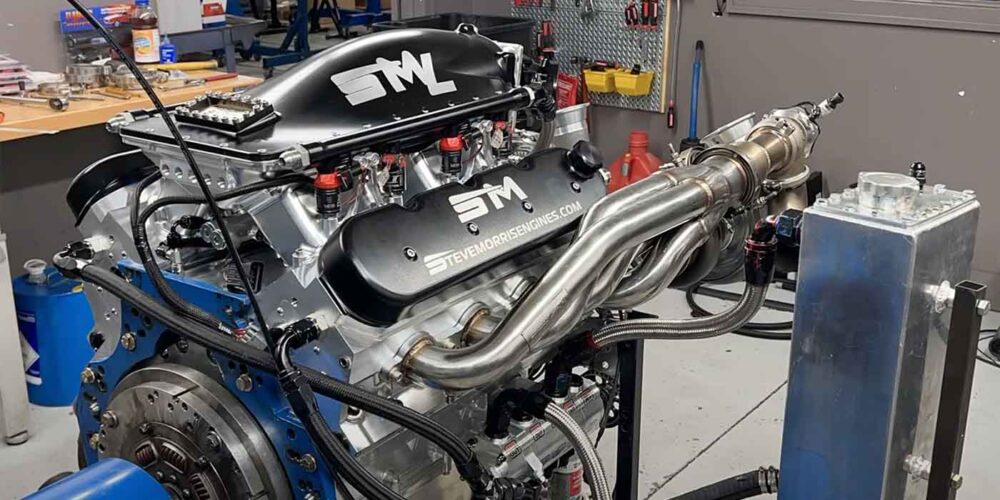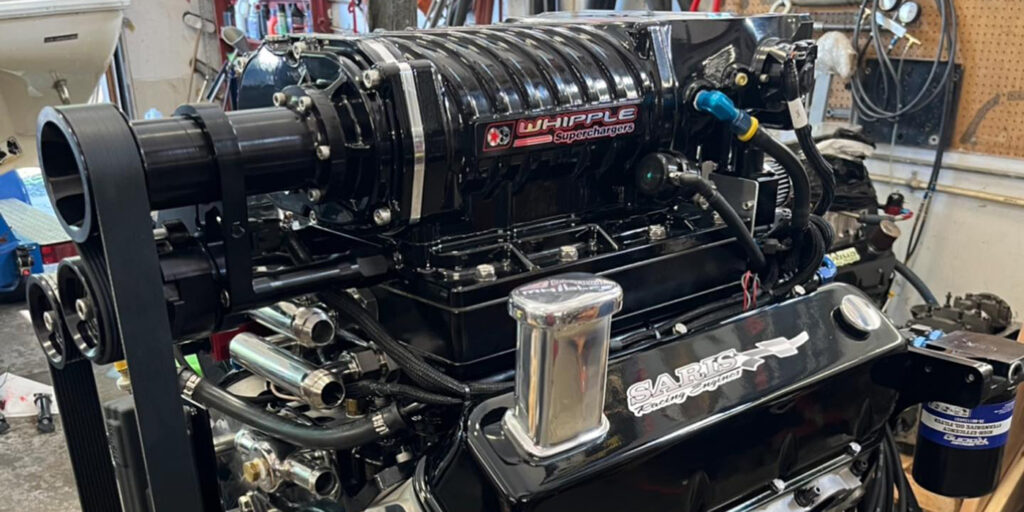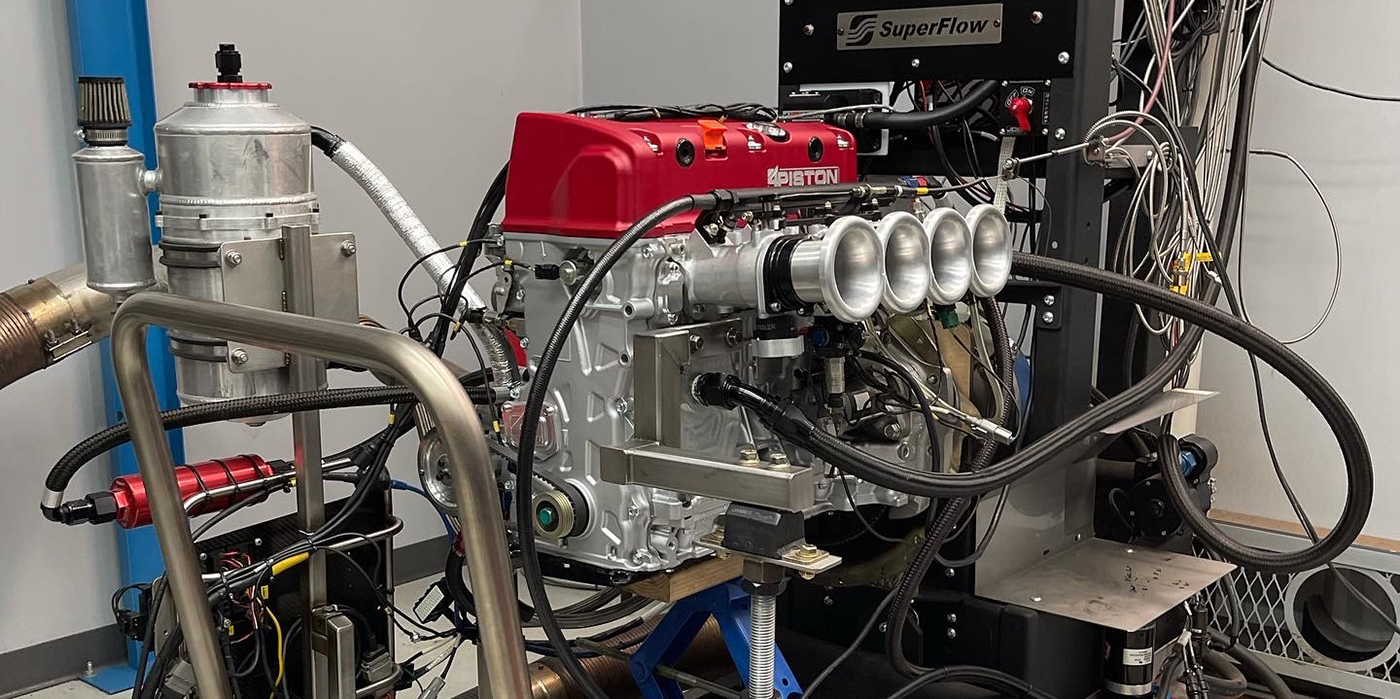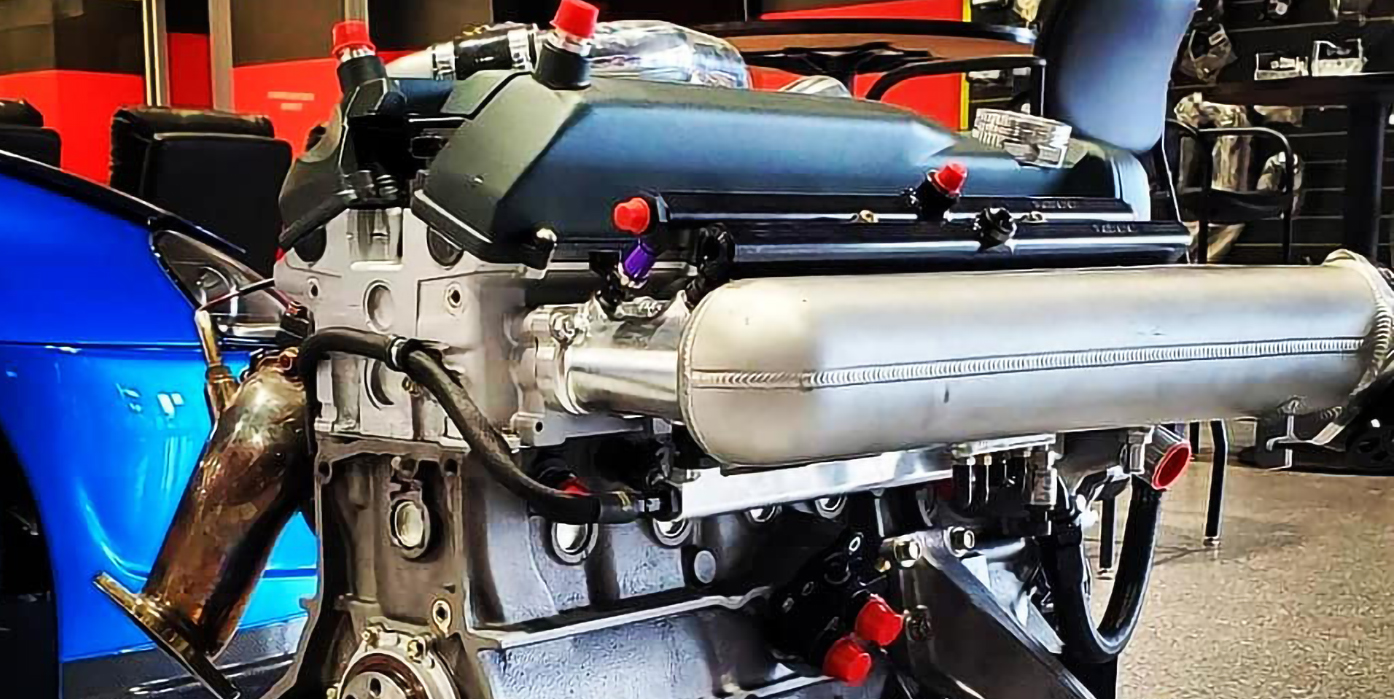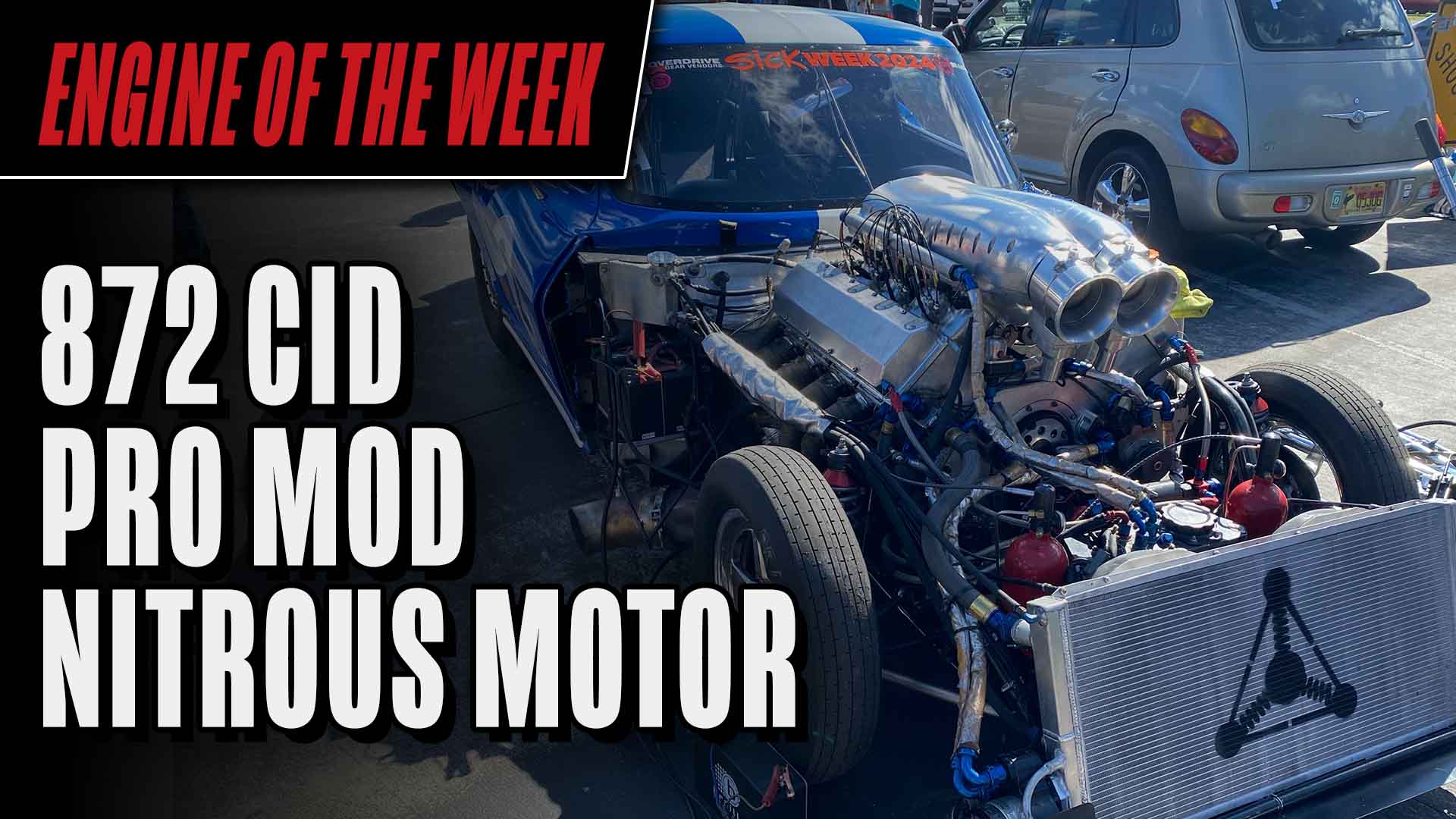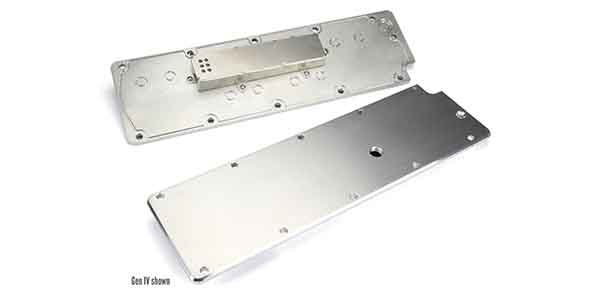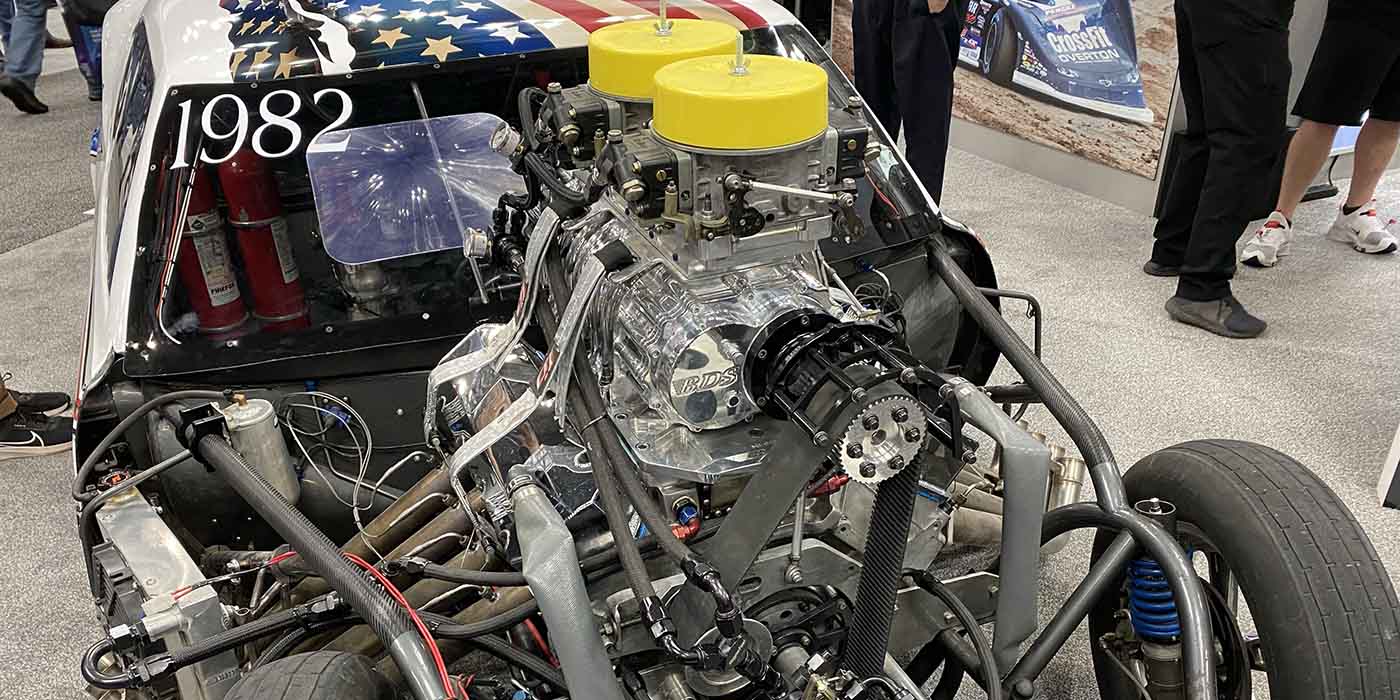Steve Morris Engines’ SML Development
Steve Morris of Steve Morris Engines in Muskegon, MI won a Masters of Motors award for the work and development he did on his now infamous SMX engine platform. Now, Morris wants to win another one for his latest engine design – the SML – an LS-derived engine than is said to be better than the OE version in just about every way possible.
After a customer wanted Steve’s SMX engine platform in an LS version, Steve saw the upside and potential in the market, so he went into development on the SML – an all-billet, 3,500-hp capable, custom engine package that’s built for endurance racing, drag racing, off-road racing, drag-and-drive events, and even the street. Those capabilities stem from the fully billet aluminum engine combo, but also the SML being a fully water-jacketed LS-based engine.
The development of the SML benefited from everything that was learned and has already been proven on the SMX platform, but plenty has been done to go above and beyond what typical LS engines can offer.
“We do not like to reinvent the wheel,” Steve Morris says. “We like to improve the wheel. Horsepower is not the problem. Making stuff live is.”
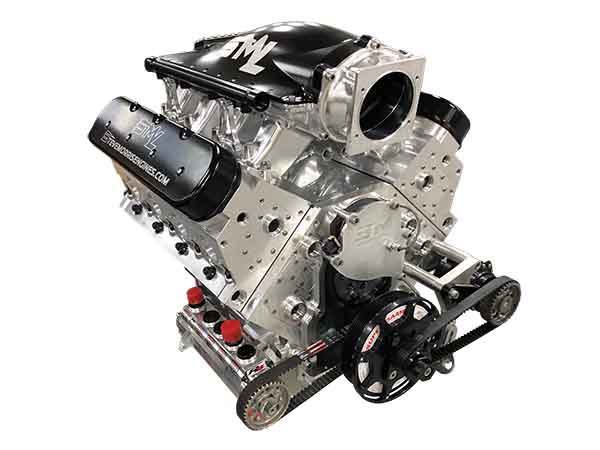
Steve’s reputation is as an engine builder who build engines that make upwards of 1,000 hp, almost exclusively. As he noted, horsepower isn’t the problem, but building an LS engine that can meet those performance goals and be reliable would be the challenge at hand. Steve started with a blank slate of billet aluminum.
The SML Block
Unlike many water-cooled blocks, the SML block has water jackets on both the bottom side of the bore and the top side to hold up to the most demanding applications. The heads also have cooling passages, but no water crosses over from the block to the heads – each has its own separate supply.
On the SML, water enters the block through the front and goes around the exhaust side of the block and then into the lifter valley and back out the front.
“The block is extreme duty and cooling for street applications, endurance and long durations,” Morris says. “There’s other billet blocks out there for the LS, but they’re not water jacketed, except for a couple, or they’re made for something different, or they still have a stock head-bolt pattern.”
The SML block is a standard deck height and features a standard cam height, a standard bore, and a raised skirt. One of the bigger deals you’ll find on the SML, however, is six head bolts per cylinder. The head bolt pattern has also been changed to be symmetrical and accept 1/2″ head studs as standard all the way around.
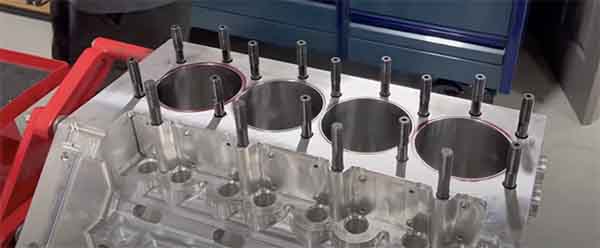
“Some of you might be thinking that there are already 6-bolt per cylinder LS blocks out there, but those aren’t a symmetrical bolt pattern,” Morris points out. “A factory LS head will not fit the SML block. Only our cylinder heads and our block will go together. Nobody else’s head will go on this, and nobody else’s block is going to fit the cylinder heads. It is our block, our cylinder heads and intake manifold.
“For the head stud pattern, we have moved the inside bolt holes inward, so there’s less distance between the cylinder bores. The reason for making the 6-bolt pattern symmetrical was to spread load correctly all the way around each cylinder bore for the gasket. We did not just make the two outside bolt holes larger. The normal LS, 6-bolt head gasket is not even remotely close to this design.
“The head stud holes go all the way down to the main stud saddle. One of the head bolts goes down through the intake port of each cylinder. This helps us achieve maximum clamping load. For the stud that goes through the port, there is a boundary layer of air that will fill the hole, so air can pass right over it.”
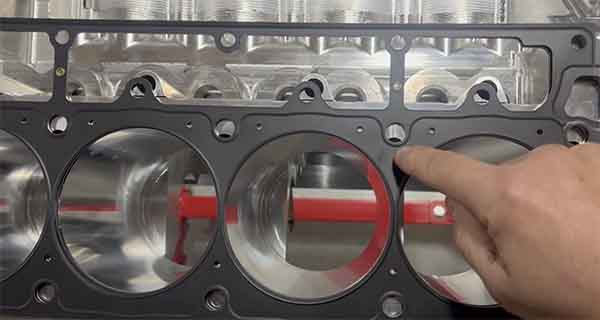
The bottom of the block is set up to fit a Cleveland main and features 4-bolt 7075 billet splayed main caps that are splayed down into the bulkhead area of the block. The main caps accept 1/2” studs as well.
“Everything is very well boxed in, even though we don’t have cross bolts in it,” he says. “What you really want is a splayed cap that goes into the bulkhead and the ‘meat’ of the block. Some people might think you want a steel cap, but you shouldn’t. Top Fuel cars that make 12,000 horsepower still use an aluminum cap, so an engine making 3,500-plus horsepower doesn’t need a steel cap. By using an aluminum cap, the growth of the block and cap is the same.
When you put a steel cap on a block, the metal grows at different rates and moves or walks and does some funny stuff, so I prefer to use an aluminum cap.”
The caps all feature machined in radiuses, so nothing has a sharp corner. Additionally, the SML fits a Cleveland main crankshaft, which is a benefit to the high horsepower this engine will regularly see.
“The Cleveland main is all about a larger diameter main shaft because it makes the crankshaft stronger and increases the crankshaft journal overlap,” Morris says. “That overlap is important in boosted applications making big horsepower.”
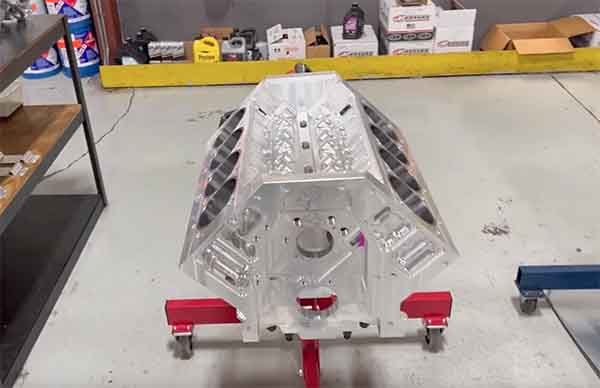
Speaking of big horsepower, the SML block also gets sleeved and features a raised skirt, so it can still fit normal LS componentry.
“All the SMLs come with a 55mm roller cam bearing, feature priority oiling and still takes a stock-style LSX front belt drive,” he says. “We’re also working on a gear drive as well. Currently, it’s a Jesel belt drive in front and even uses a stock cover in the back.
“A side note on the roller cam bearings is that they don’t receive pressure-fed oil. I run these in drag-and-drive and endurance applications all the time. In fact, I don’t even put an oil hole from the main down to the cam bearing because the rollerized cam bearing just blocks it. The roller cam bearing relies 100 percent on splash and is perfectly ok. That’s what it’s designed to do and made to do. What we’re gaining from this is all that oil that would be going by your cam bearings is kept at the mains, at the rods and up to the valvetrain instead.”
To go hand-in-hand with the SML block, Steve also developed a new SML cylinder head. As mentioned, due to the symmetrical head stud pattern, the block will only accept an Steve Morris Engines-built cylinder head.
The SML Head
The cylinder heads are made of billet aluminum and are fully water-jacketed as well. The heads were designed in CAD and then machined on the shop’s 5-axis Centroid CNC.
“There’s no water through the deck surface of the heads,” Morris says. “Water goes in the front of the head and through the exhaust side, cooling the spark plug side of the combustion chamber. It then crosses over to a passage above the exhaust port to cool that area. Then, it crosses over to a passage that connects to a head stud area. We made a billet o-ringed barbell that screws on top of the head stud and is double o-ringed top and bottom so it keeps the water in it and allows that head stud area to become a water passage. Then, the water crosses the head and goes between the intake ports and up against the chamber and the deck surface to cool that portion of the head. Then, the water comes out through our end plate where we cool the end of the cylinder head.
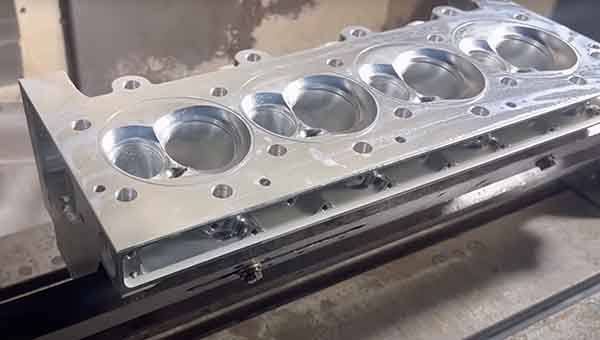
“The heads and block have completely separate water systems, so no water transfers through the deck surface and there’s never a chance of blowing a head gasket and spraying water all over the track and killing yourself.”
As said with the block, the head bolt pattern is a big differentiator as compared to other billet cylinder heads for the LS. All the head bolts on the SML are hat washered inside and out, and every one of the six holes fits a 1/2″ head stud.
“Other LS heads have four 1/2″ head studs and two 3/8” head studs,” Morris says. “This is a significantly better clamping load than what other LS heads can offer. Our billet SML head weighs 5-lbs. more than a conventional LS7-style head because it’s all in the deck surface and the meat and what makes this cylinder head stronger and still water-jacketed.”
The heads have o-ringed exhaust ports and feature an extremely large guide, which are the same as on the SMX engine. This works best for the street driving this engine will see to deal with the extreme heat and length of running time. The intake guide is standard size.
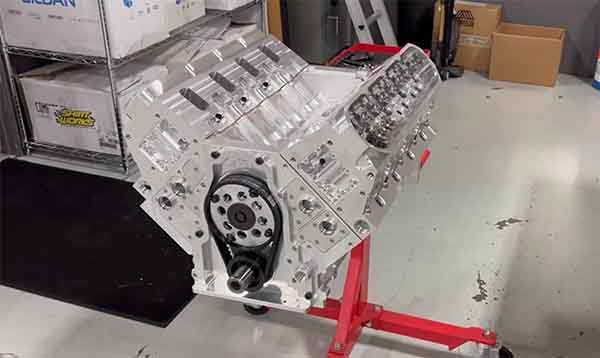
Additionally, SML heads will take a standard LS7 valvetrain if that’s what a customer wanted to use. However, Steve specs the build with quality springs, steel rockers and a one-piece stand. The heads will take a stock LS valve cover and accept your hot side system/headers. The flange angle, flange height, port height is all the same as a normal LS engine.
“With exhaust ports in the typical LS position, the SML is designed to be a drop in replacement for your existing LS setup,” he says.
One caveat is that the SML also comes with an SME billet intake manifold, made specific to fit the SML. Other manifolds would need to be port matched and machined in order to fit.
A Finished SML
Steve Morris Engines is not selling the bare SML block or bare SML heads, but rather the long block SML combo, which includes everything from the intake manifold to the oil pan. It’ll run you nearly $90,000, but will feature a Dailey billet oil pan and oil pump, Jesel belt drive, a billet Callies crankshaft, 6.100” billet R&R solid beam connecting rods, custom forged side-relief SME pistons, custom Manton rocker arms, and more.
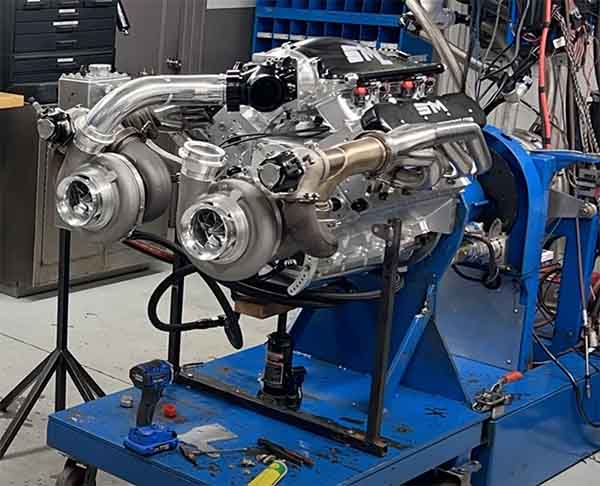
“You get a billet, fully water-jacketed, 3,000-plus horsepower capable and livable LS-based platform,” Morris says. “This is a direct drop in, so take your LS platform out that continues to break or have issues, and the SML will fit. The exhaust pattern, height and spacing are all the same, so your turbo kit and everything will just plug right into your car. Most everything will just plug right on and work such as accessory drives, exhaust, hot side, cold side, but you might see minor things with the manifold – but we have it both forward and rear facing – so you can do different things.
“This engine is not about making the absolute max horsepower that any kind of LS can make. It’s about making max horsepower with endurance.”

